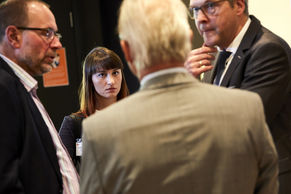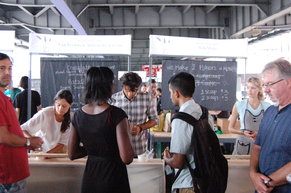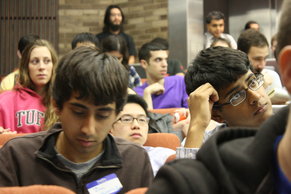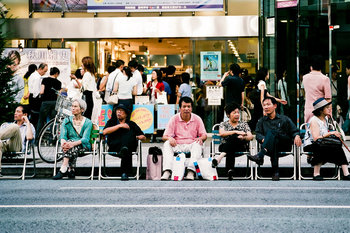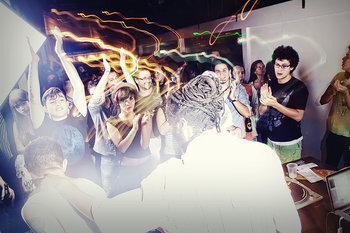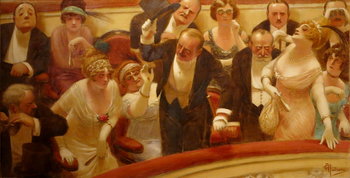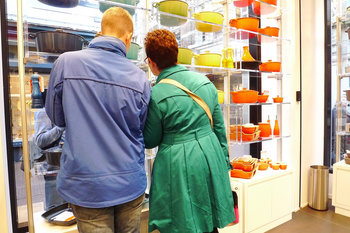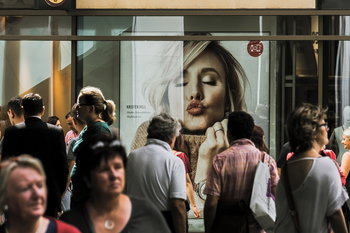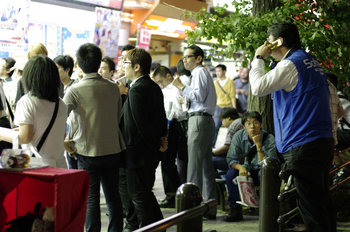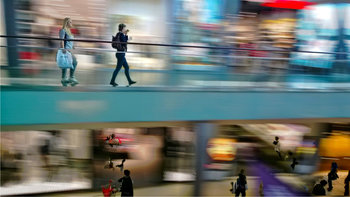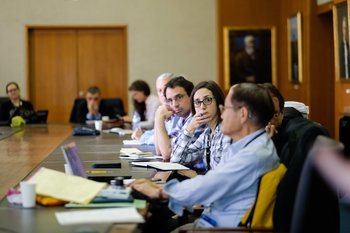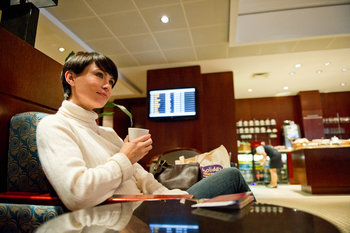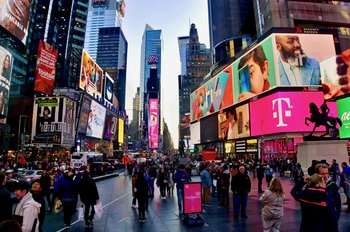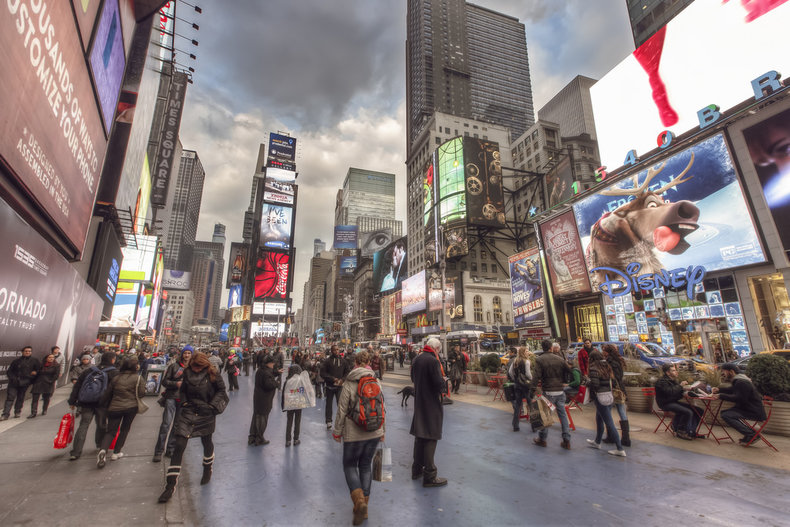
Markets
Markets are competitive forums where producers offer goods and consumers buy goods. It is common to think of producers as "pushing" products and services at consumers with techniques such as advertising. Consumerism is the opposite view that marketing and goods are shaped by consumer behavior and producers are simply conditioned to do what consumers reward.Competition
Just as there is competition between firms, there is competition between consumers to purchase desired items. This competition pushes prices up and a lack of competition pushes them down. For example, a health food craze whereby a particular fruit is suddenly viewed as having great health benefits can result in surging demand and prices for the fruit. This can be contrasted with the common perception that producers are primarily in control of prices.Commoditization
Commoditization is when consumers view goods as interchangeable such that they buy based on price alone. This forces all producers to except a market price. This situation also doesn't reward any producers who try to improve quality because consumers buy based on price no matter what. For example, the market for economy airline tickets is mostly commoditized such that consumers almost always buy the cheapest seat. This doesn't reward airlines that have better food, service, terms, equipment or safety. In this example scenario, a consumerist would blame any quality problems with economy class flights on consumer choices.Dollar Voting
Dollar voting is an analogy that suggests that every dollar spent on a product or service is a vote for the producer. For example, if consumers were to reward all firms that work hard to reduce their impact on the environment -- all firms would need to do this or they would eventually die out. The idea of dollar voting shifts responsibility toward the consumer for economic bads. This can be contrasted with the common view that producers are solely to blame for poor practices.Consumer Protection
Consumer protection is a class of laws and regulations that protect consumers from poor business practices by producers. For example, regulations that require infant car seats to be reasonable safe. In theory, it is possible to change the world significantly with consumer protection laws. For example, consumers do want to help the environment but often can't tell which products or services are doing the most damage. Labeling that makes this transparent could have a significant impact on the planet.Consumer Advocacy
Consumer advocacy is a type of organization that represents the interests of consumers. These may test products and share information that producers don't voluntarily share. Consumer advocacy groups may also engage in lobbying to promote laws and regulations that benefit consumers or prevent laws and regulations that harm consumers. The money spent by consumer advocacy groups is often small as compared to that spent on lobbying by producers. However, consumers advocacy groups often have genuine grassroots support where producers may resort to astroturfing.Conspicuous Consumption
Conspicuous consumption are consumer purchases that are motivated by a desire for social status. In other words, it is consumer behavior that is meant to signal or countersignal a desirable social trait such as wealth, attractiveness or coolness. A common narrative is that producers trick consumers into wanting brands that represent social status with marketing that play on their desires and fears. Consumerists view this in reverse such that producers are only giving consumers what they want and reward in the market.Conspicuous Conservation
Conspicuous conservation is the idea that people are motivated to spend money in ways that make them look like a good person. This can include donations and purchases of goods that have an environmentally and/or socially responsible image. The term conspicuous conservation suggests that some consumers are less interested in the actual impact of their purchases than how a purchase makes them appear to others.Conspicuous Leisure
Conspicuous leisure is the idea that consumers seek lifestyles and experiences that increase their social status. For example, engaging in expensive and time consumer hobbies such as sailing around the world to demonstrate social traits such as wealth, risk taking and strength. Historically, living a life of idleness strongly signaled wealth with routines such as afternoon tea that wasted away the most productive hours of the day, an unthinkable luxury from the perspective of the working class.Consumerization
Consumerization is the process by which products and services that used to be designed for businesses are now designed for consumers. For example, in the 1960s all computers were designed for business customers. In recent years, businesses typically use computers such as smart phones that were designed for consumers. Likewise, energy infrastructure was once designed exclusively for utilities but modern products such as solar panels are often designed for consumers.Customer Needs
Consumerists view customer needs as the foundation for product design and marketing. According to this view, it is very difficult or impossible to sell customers anything they don't think they need. This can be contrasted with the view that marketers design things independently and then are able to push customers to buy, even if they have no need. The later is a somewhat naive view. In fact, brilliant innovations that are a leap forward in some way can be surprisingly difficult to market if customers don't see the need for them. For example, the VCR was invented in 1956 but was a commercial failure until sales finally picked up in 1975.Discretionary Income
Discretionary income is the money a consumer has left over after taxes and basic needs such as rent, food, energy, clothing, medical and transportation are met. The power of consumers to shape the economy is directly related to levels of discretionary income that are available to the masses. Where consumers are poor, they may be stuck in a cycle of paying recurring bills and existing debts such that they have few choices. As such, consumerist theories only apply to markets with a large middle class.Consumer Confidence
Consumer confidence is a measure of how the consumer is feeling about the future. This can be used to explain economic cycles as an alternative to theories that focus on the business cycles of producers. The idea behind consumer confidence is that cycles of fear, confidence and overconfidence cause or contribute to economic conditions. For example, a period of fear that causes consumers to stop spending to save and pay down debt. This may be followed by a period of confidence and excessive confidence that cause debt to spike and the cycle to reset.Materialism
The term consumerism is often used to criticize consumer behavior, particularly the idea that consumers are greedy and materialistic. Consumers may view purchases as a form of self-fulfillment and brands as an element of their own identity such that they view buying things as key to their "happiness."Summary
The view that consumers shape the economy with their choices. This includes the sense that consumers have limited ability to evaluate things such as product quality, safety and the impact of their purchases such that they require protection.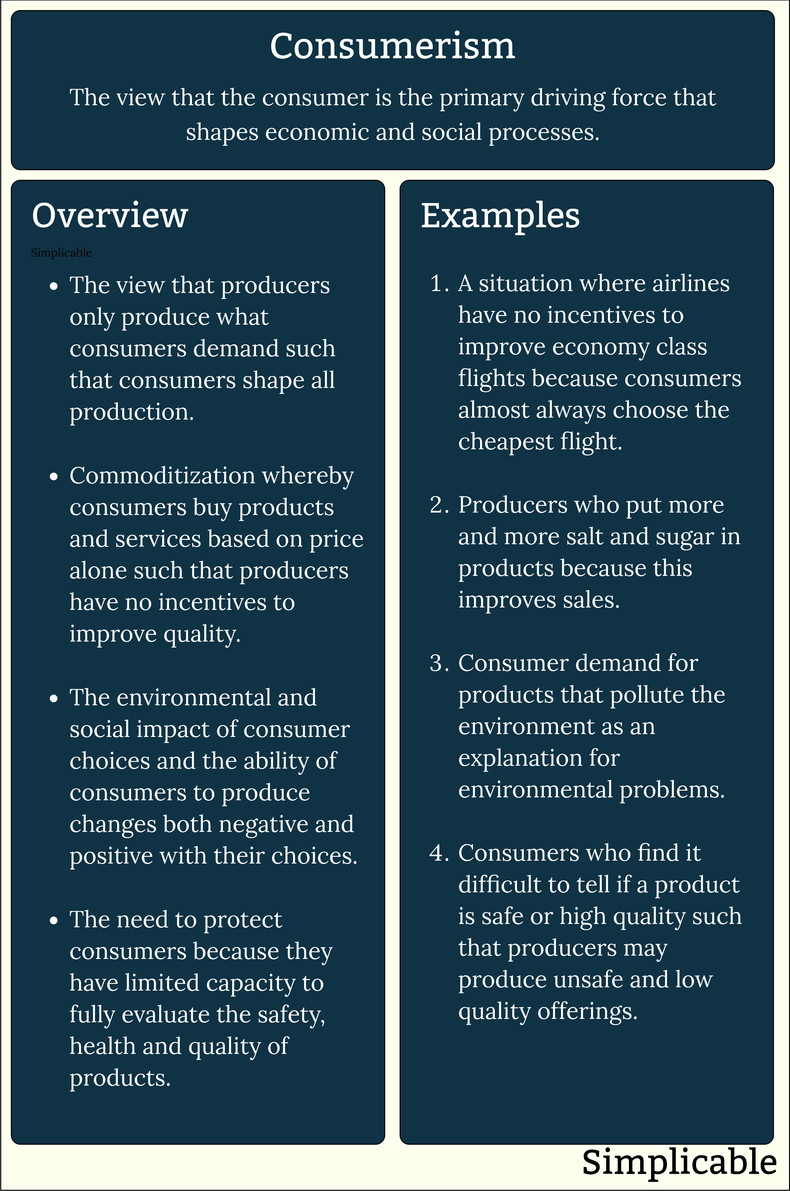
| Overview: Consumerism | ||
Type | ||
Definition | An approach to economics that views the consumer as the primary force that drives economic activity and outcomes. | |
Related Concepts | ||





